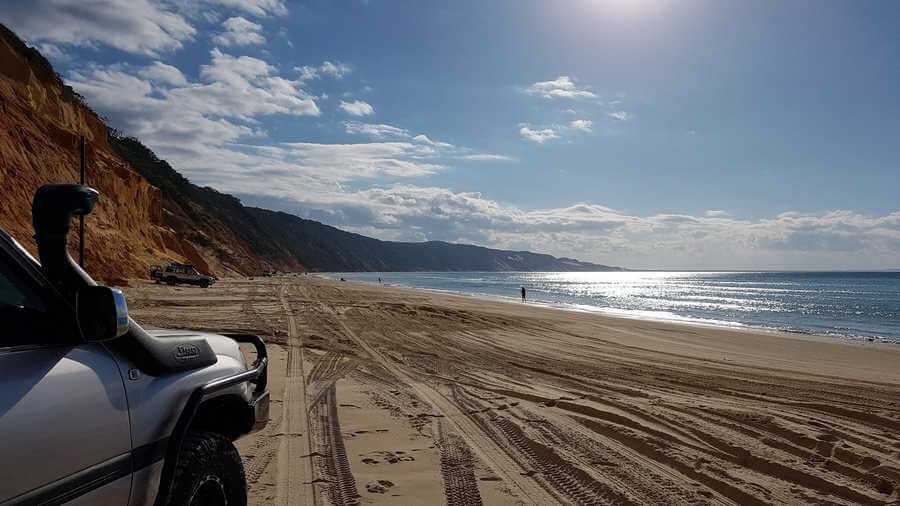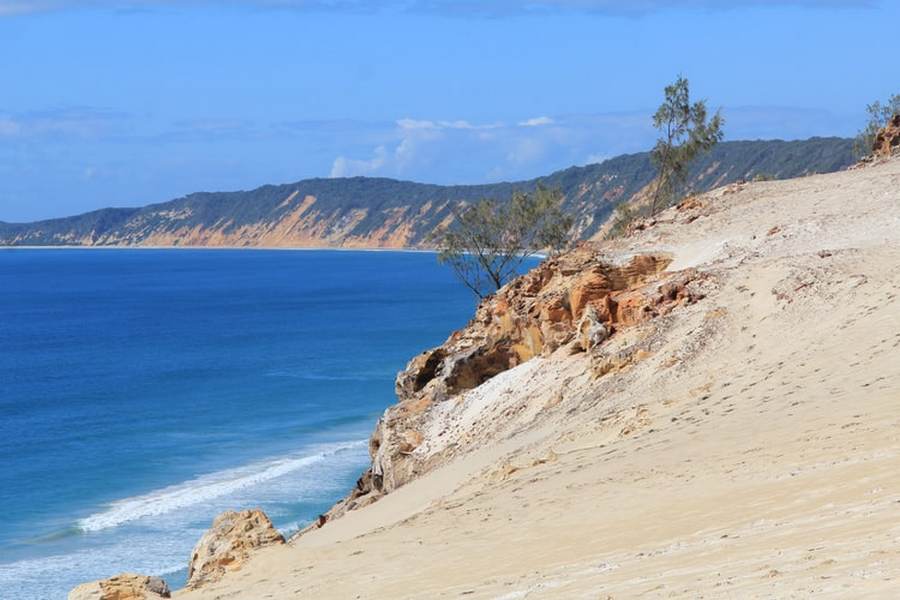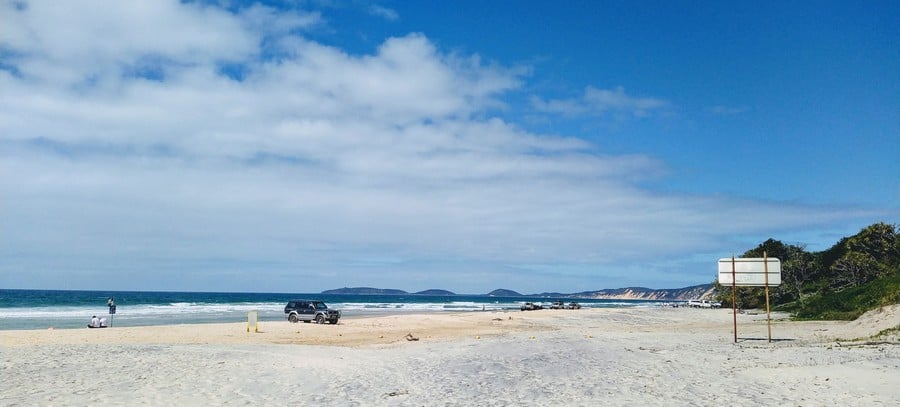Rainbow Beach in Queensland, Australia is a popular destination. This is primarily because of its access to the world’s largest sand island, Fraser Island.
However, Rainbow Beach proves to be a rural coastal town with a gorgeous stretch of beach that impresses its visitors. The coastal town has a 23km stretch of beach that is known for its uniquely coloured sands.
When most people think about rainbows, they imagine the brightly coloured arc of red, orange, yellow, green, blue, and violet.
The southern sands of Rainbow Beach’s stretch of beach have beautifully coloured sands that are often described as “rainbow sand“. However, is the sand truly rainbow sand? The short answer is no.
The namesake of “rainbow sands” is simply used to describe the array of colours that emerge from the sand dunes at Rainbow Beach. They aren’t quite the same as what a traditional rainbow is defined as.
The term “rainbow” that is used to characterise the beach and sand dunes at Rainbow Beach is more of a way to imply an array of melded colours. Most of the colours that are seen at Rainbow Beach are various hues of reds, oranges, and yellows not the full spectrum of seven colours found in Rainbows.
All of these various colours swirl together to create a truly fascinating sand dune structure.
Some of the dunes stand as tall as 200 metres and the colours are best seen at low tide when the dunes are more exposed.
How Many-Coloured Sands Are Found Here?
Even though most of the colours in the sand at Rainbow Beach appear to be different variations of reds, oranges, and yellows, it is estimated that there are many different colours within these sandy swirls.
Currently, it is suggested that there is anywhere between 40 and 72 different coloured grains of sand within Rainbow Beach.
Perhaps someone actually counted the colours, although it is more likely that the numbers are estimated based on a quick visual of the dunes.

Sand, in general, makes it way to continent’s shorelines through erosion of surrounding rocks and minerals by the ocean. The constant exposure to crashing waves breaks these rocks down into grains of sand that are then washed up along various shorelines.
Because of this unique formation of beaches, every beach around the world is a little different than others. This is particularly true of the coloured sands at Rainbow Beach.
Although, the sands found on Rainbow Beach are said to be a direct result of erosion from rain and wind from the backdrop of sand dunes that face the ocean.
When Was The Rainbow Sands Discovered?
The colours in the rainbow sands are said to derive from iron oxide and over time, have swirled together to mesh up other combinations of colours. But when exactly were the rainbow sands actually discovered?
This is a little tricky to answer. The name “Rainbow Beach” is said to come from the colour of the sands themselves.
However, some people attribute its namesake to a local legend concerning the Aboriginal people who once inhabited the area.
According to the legend, a spirit named Yiningie was in battle when it collided with the large sand dunes in the area. During the collision, the spirit released an array of colour, forever staining the sands.
Whether or not the legend is true, the colour on the sands has been noted as far back as the Aboriginal people’s existence to the area.
In general, Captian James Cook discovered large portions of Australia in the late 1700s. However, this can’t be directly related to the discovery of the coloured rainbow sands.
discovered large portions of Australia in the late 1700s. However, this can’t be directly related to the discovery of the coloured rainbow sands.
Rainbow Beach Coloured Sand Cliffs Location
What makes the sand so remarkable at Rainbow Beach are the sand dune cliffs in which it comes from. These towering cliffs are jagged sand dunes sprawled about the southern end of Rainbow Beach’s main beach area.
More specifically, this is the southern end of the long stretch of beach (somewhere around 23km) that is considered to be Rainbow Beach.
The cliffs are all various sizes but some of the tallest ones are close to 200 metres in height. These cliffs are what people mainly come to see.
When the cliffs are exposed to rain or wind, they transition from one display of colour to the next. This is because they are undergoing erosion from rain and wind which causes a shift in the sand dunes.
As these massive sand dunes taper down closer to the beach shoreline, the sand colours meld together even more definitively.
Because of this incredible transformation, the sands are considered a natural piece of art by mother nature. The iron oxide in the sands produces the varying hues of colour that are then mixed, swirled, and moved about by wind and rain.
As a direct result, they flow downwards towards the beach shoreline. This makes them quite beautiful and unique as well. There simply isn’t anything quite like it anywhere else in the world.
The local community that is known as the rural coastal town, Rainbow Beach is nestled right behind these sand dunes.
While it is a more rural town compared to other coastal cities in Queensland, it is easily one of the most sought after areas because of the sands.
The sand cliffs and the town of Rainbow Beach are within the Gympie region of Queensland.
The cliffs are considered a fragile piece of the beach ecosystem. While it might be tempting to climb or cascade up the coloured sand cliffs, it is not recommended.

Mostly, this is to help preserve the natural flow of colours that created by the wind and rain. However, it is also to help protect visitors to the location as well.
The sand is exactly that…sand. It isn’t a stationary setting and the sands shift under the weight of human influence.
To prevent unwanted falls or accidents (and to preserve the sands and their structure along the coastline) it is important to admire them from the shoreline’s edge.
Australia is well-known for its variety of landscapes, seascapes, and wildlife encounters for its visitors. Rainbow Beach and its coloured sand cliffs are just another great reason to appreciate the naturalistic appeal to this gorgeous country!
More Pages On Other Areas
Vacations are fun and can be a wonderful way for couples to spend quality time together. As a couple spends time together, they create memories to cherish forever. However, one question often arises:...
Recreational fishing in many parts of Victoria requires a licence that enables you to have fun while legally carrying out your non-commercial fishing activities. However, there's often a lot of...


